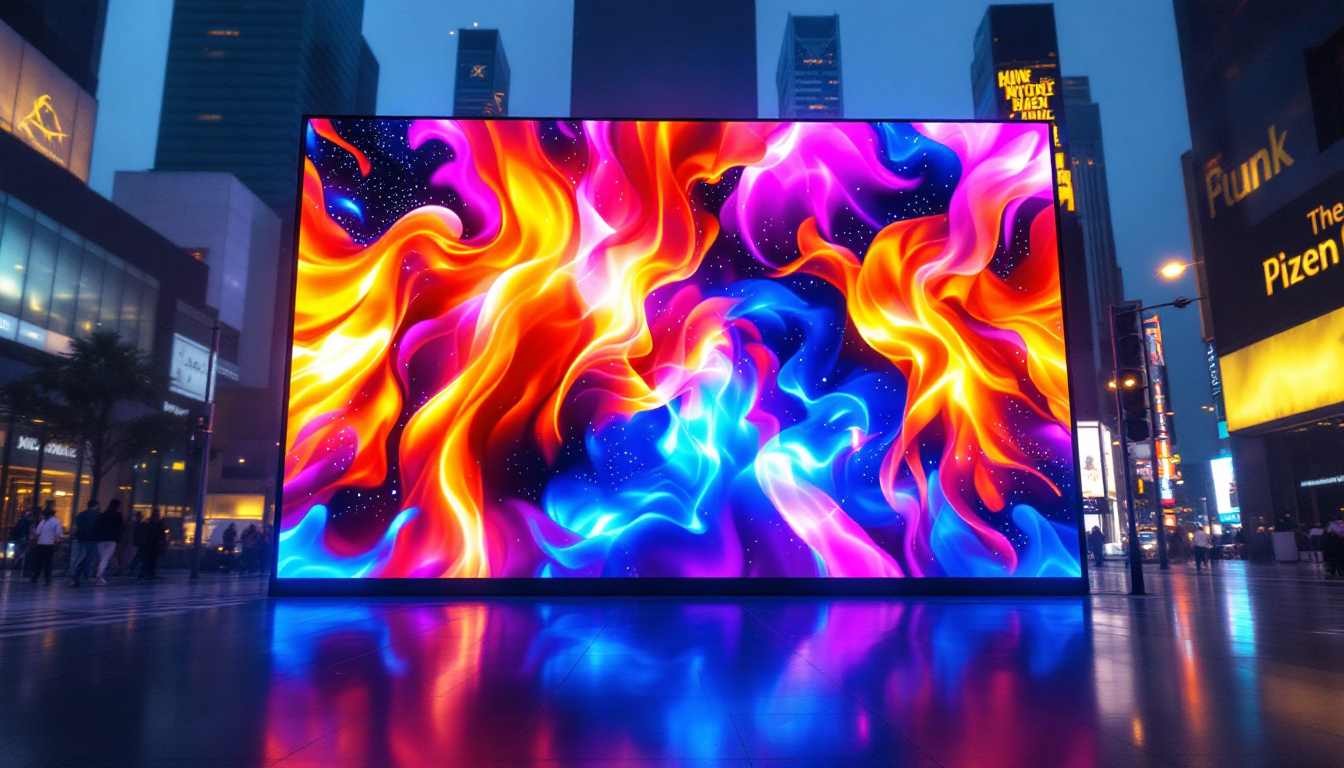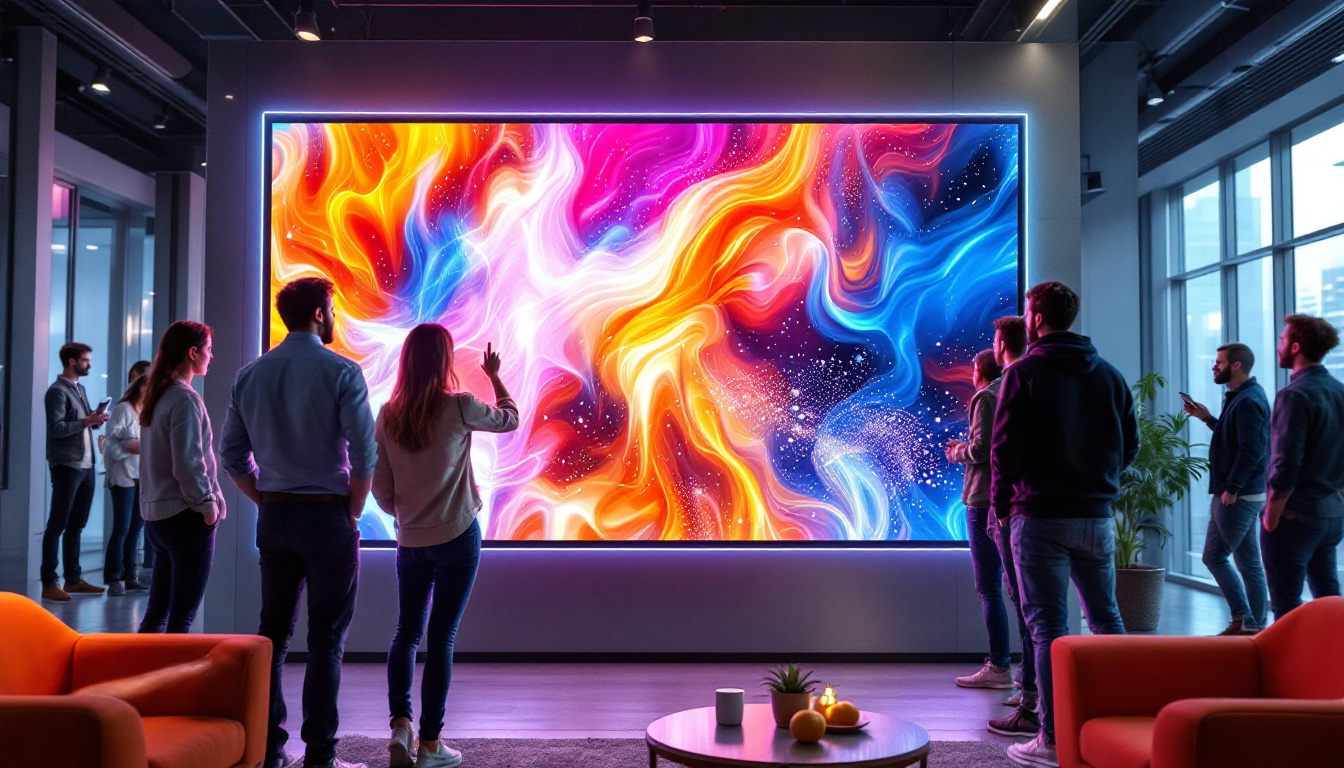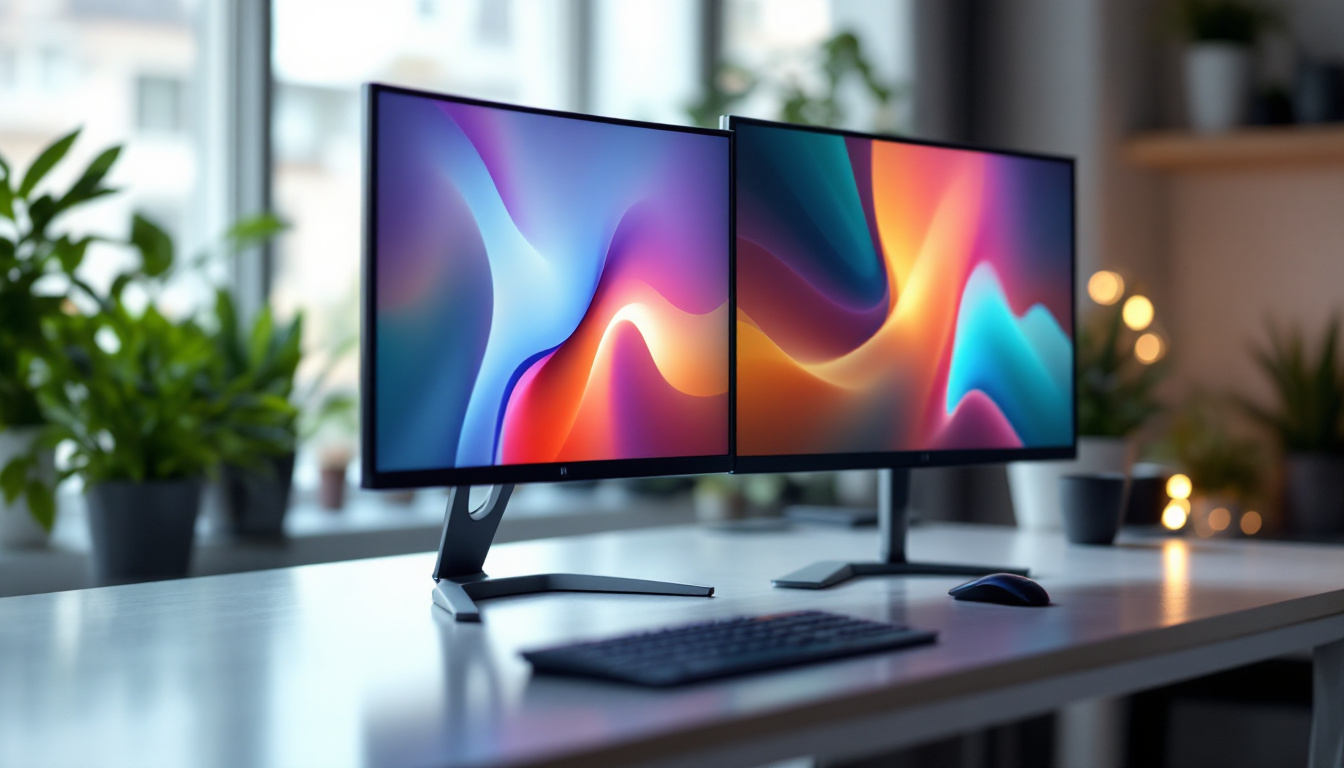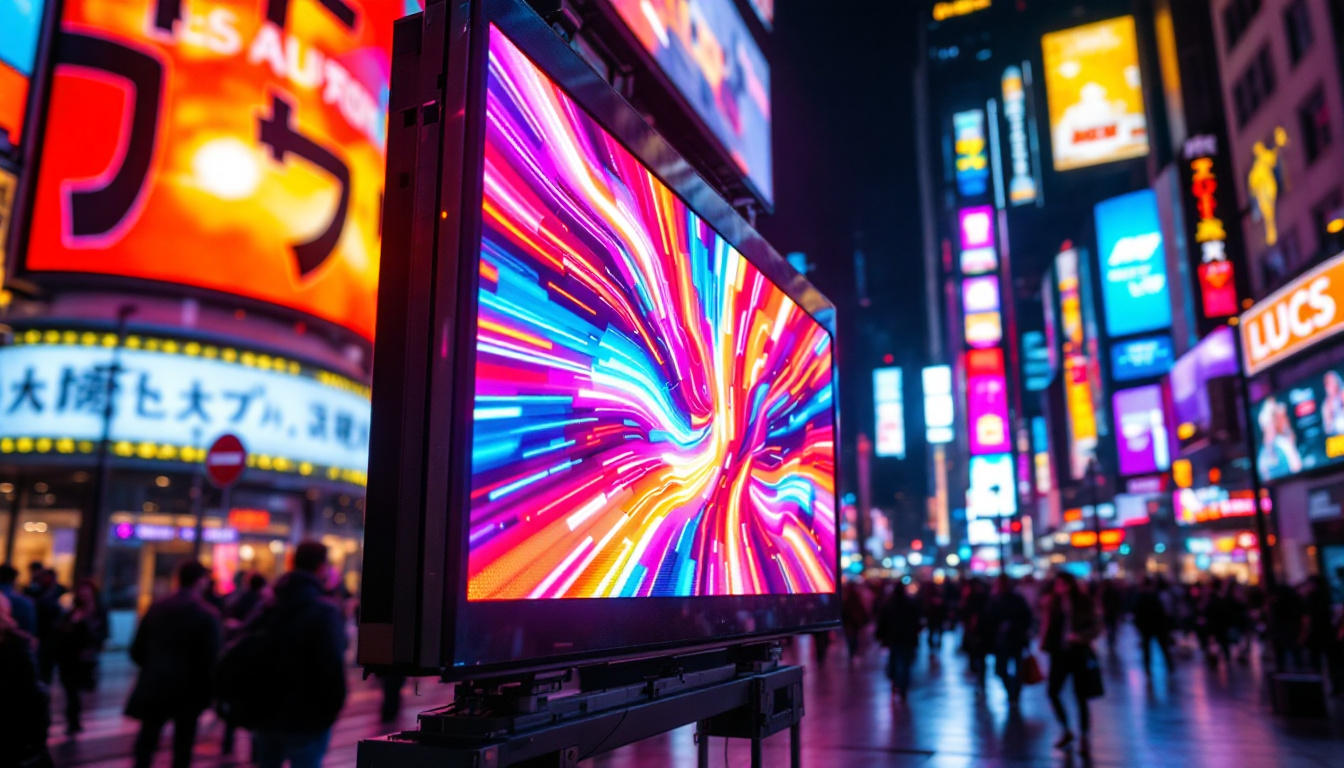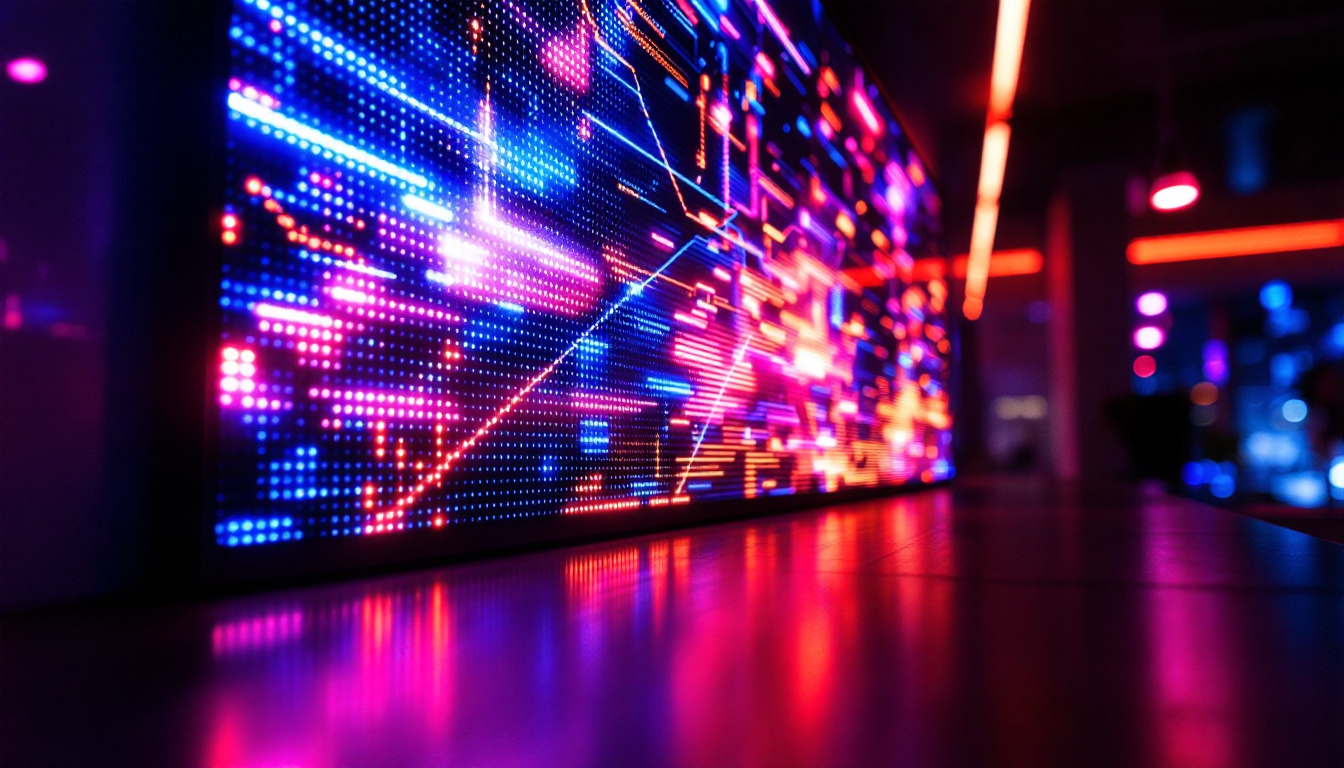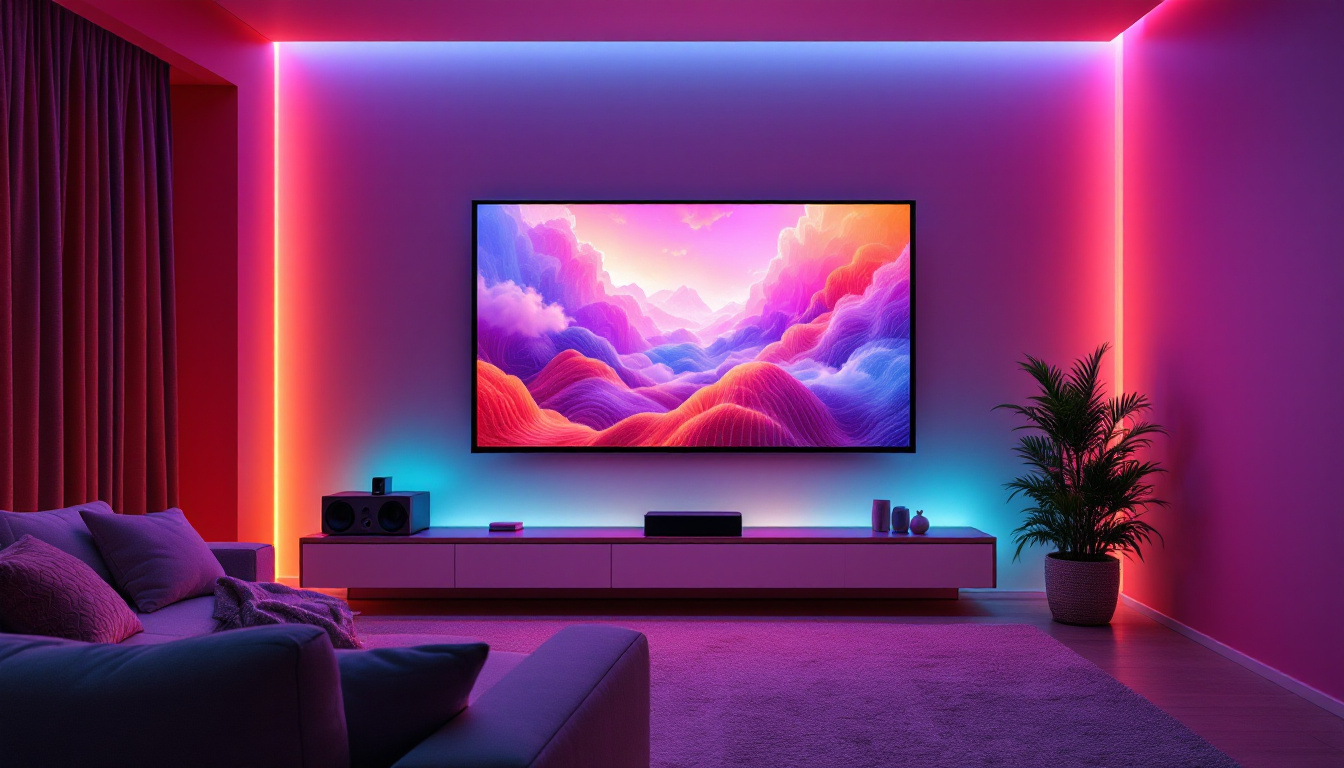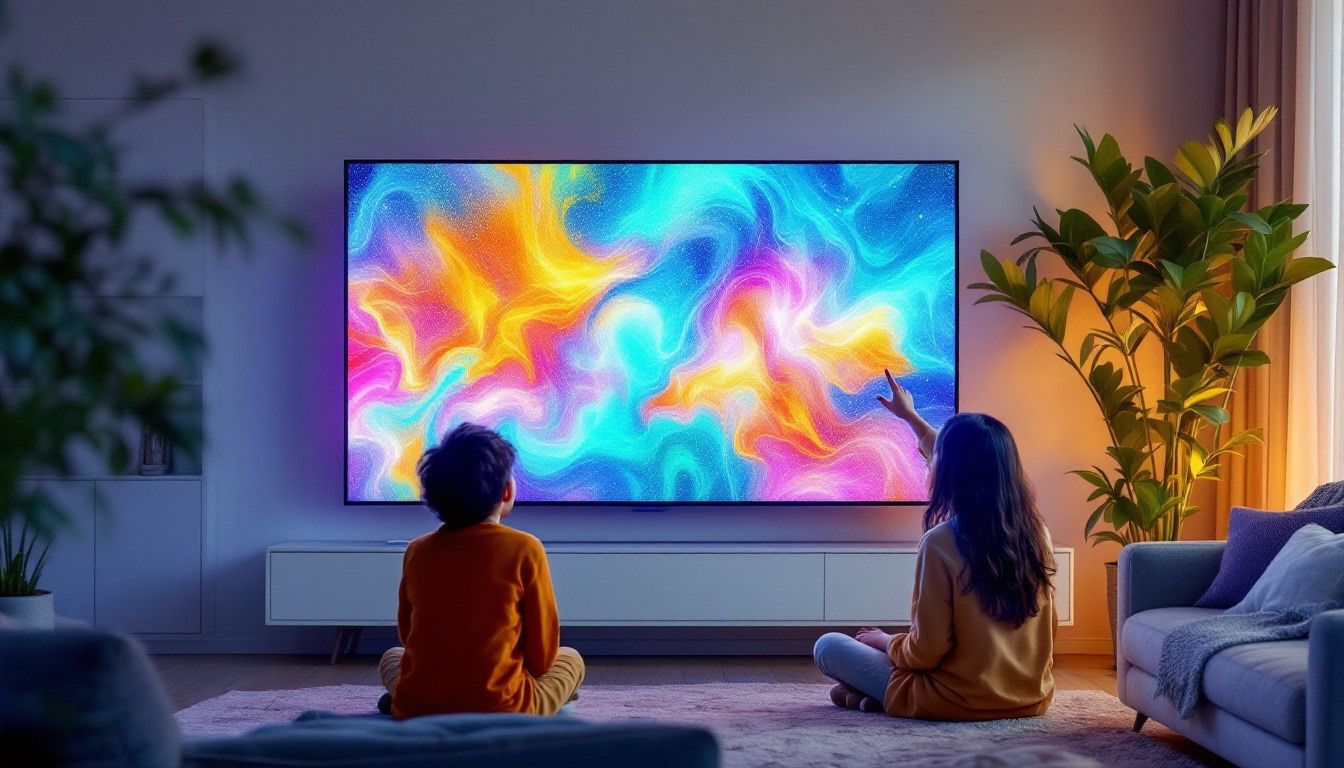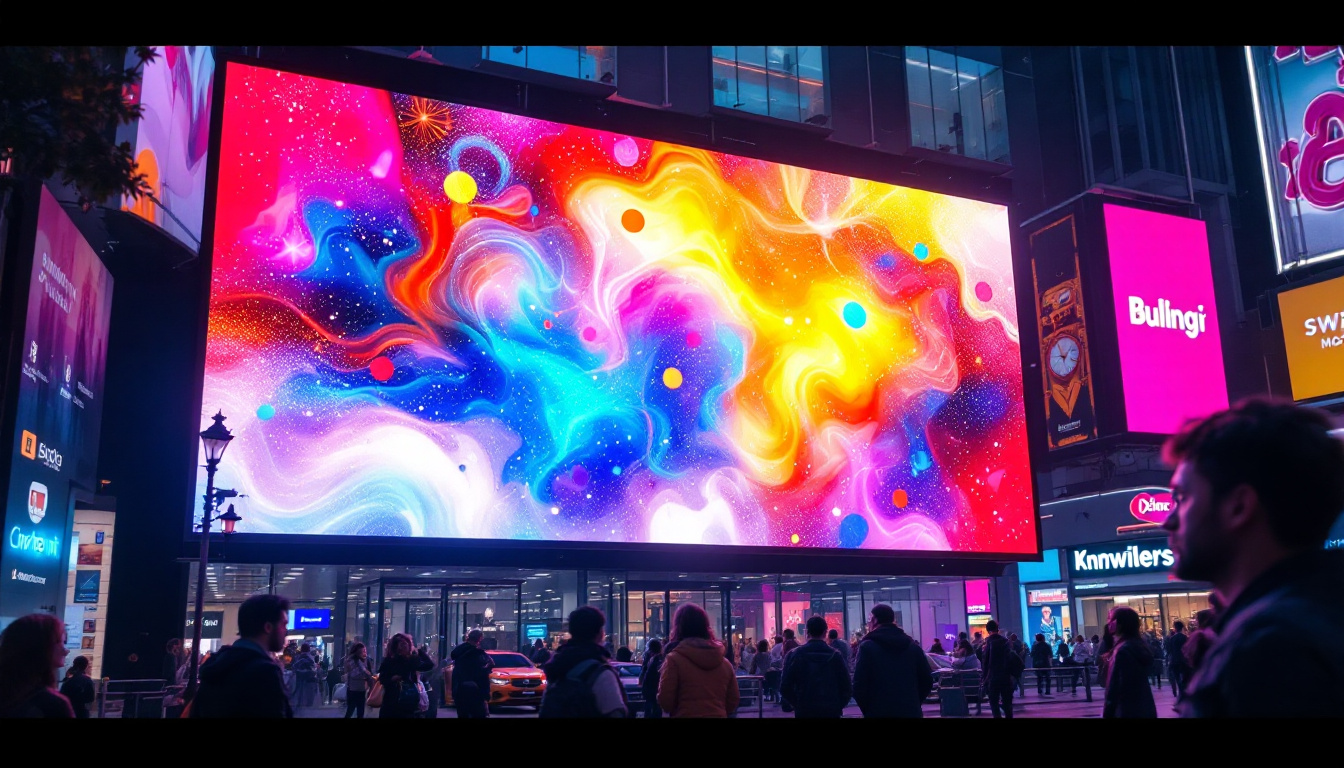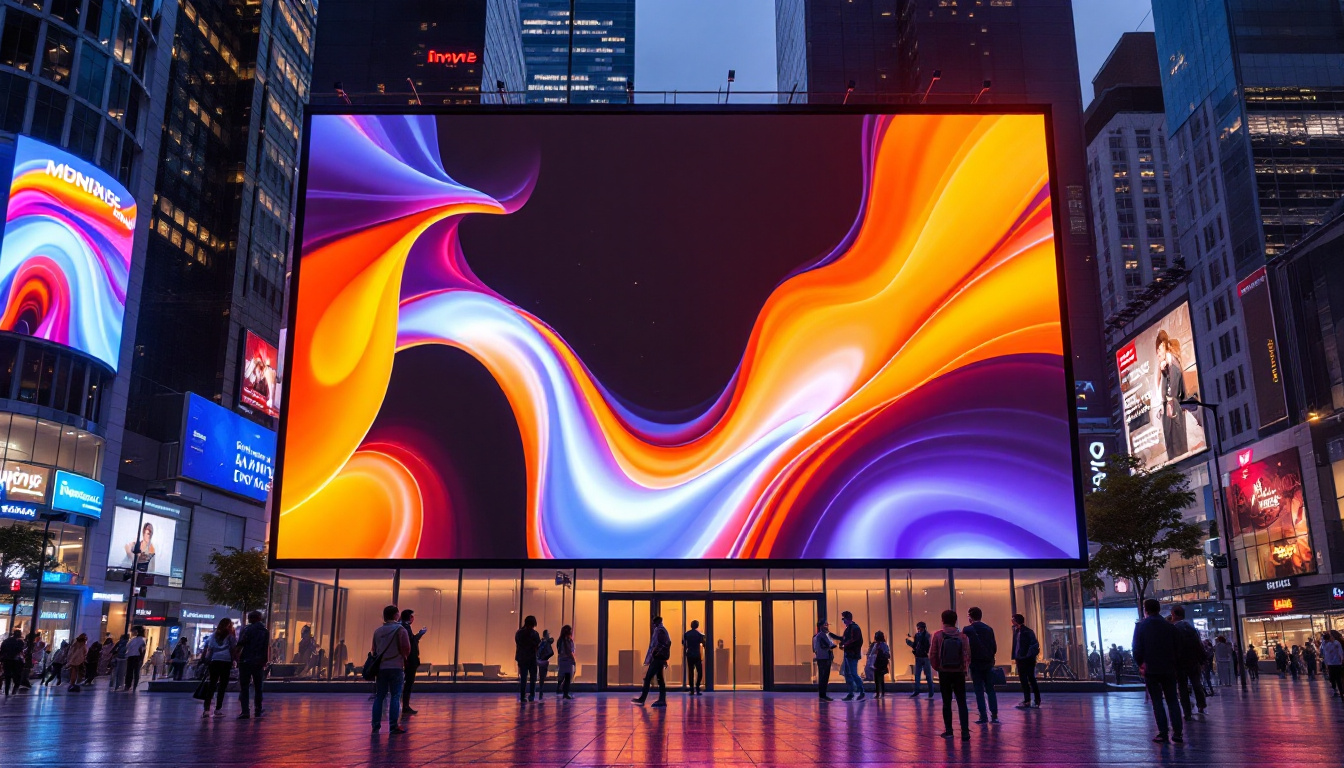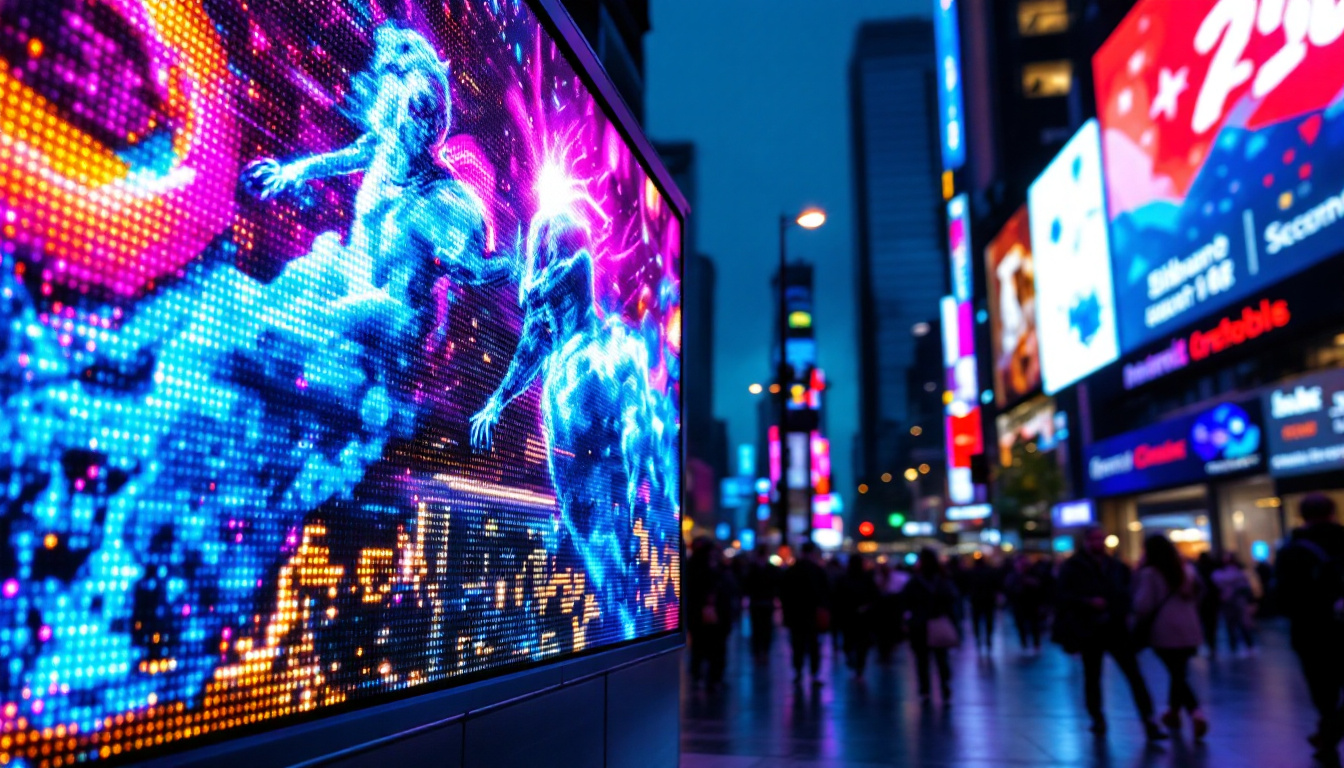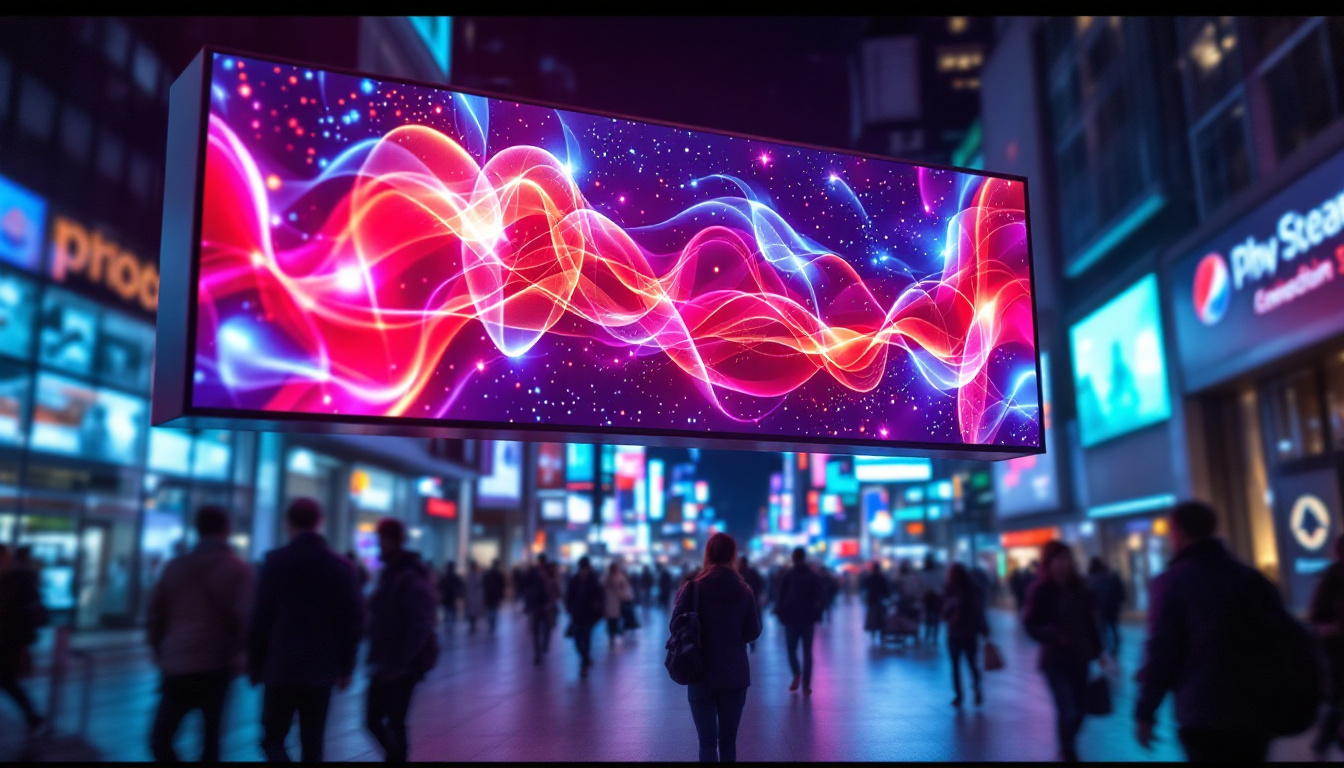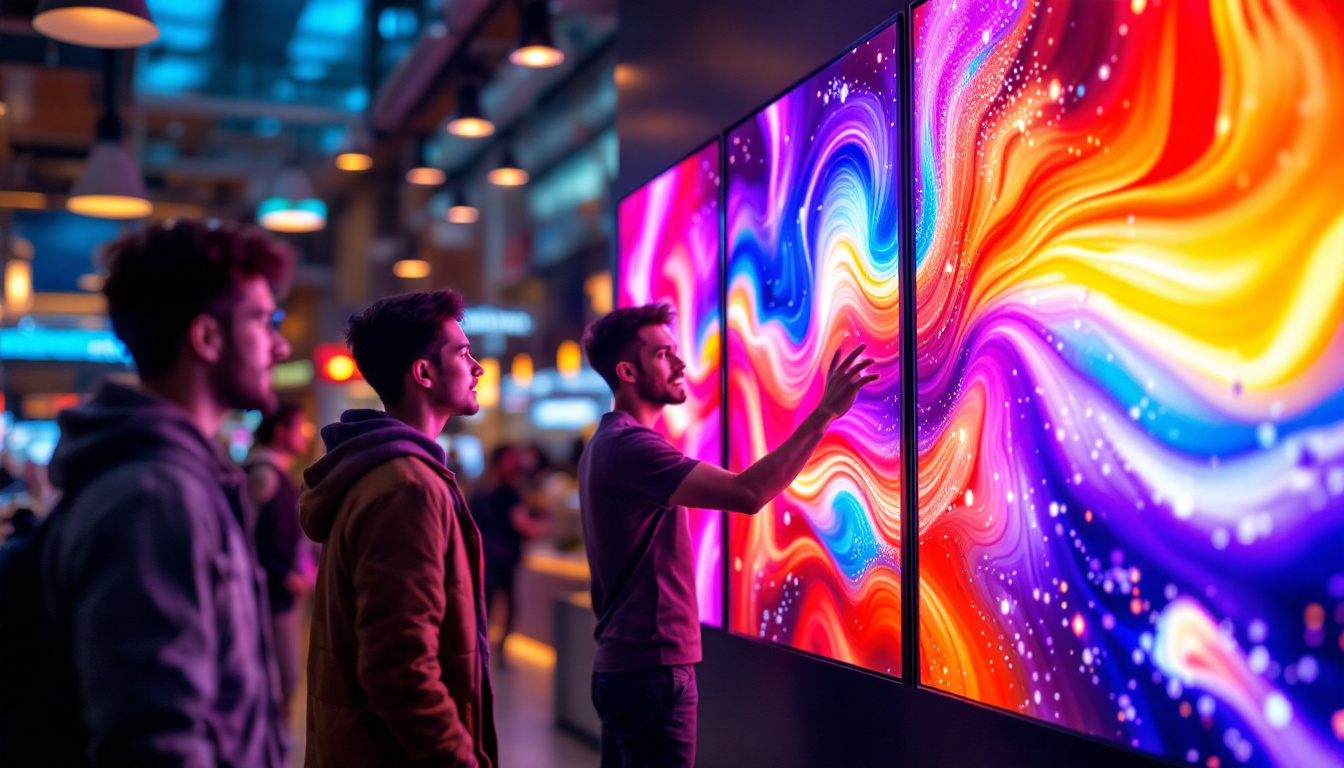In today’s digital age, interactive flat panel displays (IFPDs) have become a cornerstone of modern communication and collaboration. These advanced displays, often featuring LED technology, are transforming the way information is presented and shared across various sectors, including education, corporate environments, and healthcare. This article delves into the intricacies of interactive flat panel displays, exploring their technology, applications, and benefits.
Understanding Interactive Flat Panel Displays
Interactive flat panel displays combine the functionality of traditional displays with touch interactivity, allowing users to engage with content in a dynamic way. Unlike standard monitors or projectors, IFPDs offer a seamless blend of display technology and user interaction, making them ideal for presentations, lessons, and collaborative work.
What is an Interactive Flat Panel Display?
An interactive flat panel display is essentially a large screen that incorporates touch-sensitive technology, enabling users to interact directly with the content displayed. These panels typically come equipped with high-definition resolution and are designed to be used in various settings, from classrooms to boardrooms.
Most IFPDs utilize LED (Light Emitting Diode) technology, which enhances brightness and color accuracy while consuming less power compared to traditional display technologies. This makes them not only visually appealing but also energy-efficient. Furthermore, the durability of LED technology ensures that these displays can withstand the rigors of frequent use, making them a long-term investment for any institution or business.
Key Features of IFPDs
Interactive flat panel displays boast a range of features that set them apart from conventional displays. Some of the most notable include:
- Touch Interactivity: Users can manipulate content directly on the screen, similar to how one would interact with a smartphone or tablet.
- Multi-Touch Capability: Many IFPDs support multiple touch points, allowing several users to interact with the display simultaneously.
- Built-in Software: Many models come pre-loaded with educational and collaboration software, enhancing their functionality right out of the box.
- Connectivity Options: IFPDs often include a variety of ports for connecting to other devices, such as HDMI, USB, and wireless connectivity options.
In addition to these features, IFPDs often come equipped with advanced annotation tools that allow users to write, draw, or highlight directly on the screen. This capability is particularly beneficial in educational settings, where teachers can annotate lessons in real-time, making complex subjects more accessible and engaging for students. Moreover, the integration of cloud technology enables users to save and share their work instantly, promoting collaboration and ensuring that valuable insights are never lost.
Another significant advantage of IFPDs is their versatility in content display. They can seamlessly integrate with various applications, including video conferencing tools, interactive learning platforms, and digital signage solutions. This adaptability not only enhances the user experience but also allows organizations to tailor their presentations or lessons to meet specific needs, whether it’s a corporate training session or a creative brainstorming workshop. As technology continues to evolve, the potential applications for interactive flat panel displays are expanding, making them an essential tool in modern communication and education.
The Technology Behind LED Displays
LED technology is at the heart of many interactive flat panel displays. Understanding how this technology works can provide insights into its advantages and applications.
How LED Displays Work
LED displays utilize light-emitting diodes to produce images. Unlike traditional LCD displays that require a backlight, LED displays can produce their own light, resulting in brighter and more vibrant images. The diodes are arranged in a grid, and each pixel can be controlled individually, allowing for precise color reproduction and contrast.
The advantages of LED technology extend beyond just visual quality. LED displays are known for their longevity and durability, making them a cost-effective choice for institutions looking to invest in reliable technology. Additionally, they are energy-efficient, consuming significantly less power compared to older display technologies. This efficiency not only reduces operational costs but also contributes to a smaller carbon footprint, making LED displays a more environmentally friendly option.
Types of LED Displays
There are several types of LED displays, each suited for different applications:
- Direct View LED: These displays use individual LEDs to create images and are often used for large-scale outdoor advertising.
- LED-Lit LCD: This type of display uses LED backlighting to enhance the brightness of traditional LCD screens, commonly found in televisions and computer monitors.
- Organic LED (OLED): OLED displays use organic compounds that emit light when electricity is applied, offering superior contrast and color accuracy, particularly in high-end applications.
In addition to these types, another emerging technology is MicroLED, which consists of microscopic LEDs that can form individual pixels. This technology promises even greater efficiency and flexibility, allowing for the creation of ultra-thin displays that can be seamlessly tiled together for larger screens. MicroLED displays are particularly appealing for applications requiring high resolution and brightness, such as virtual reality and augmented reality environments, where immersive visuals are crucial.
Furthermore, the versatility of LED technology extends into various sectors, including retail, education, and entertainment. In retail, for instance, LED displays can be used for dynamic signage that attracts customers’ attention with vivid colors and animations. In educational settings, interactive LED panels can facilitate engaging learning experiences, allowing for real-time collaboration and multimedia presentations. The adaptability of LED technology continues to drive innovation across industries, making it a pivotal component of modern visual communication.
Applications of Interactive Flat Panel Displays
Interactive flat panel displays are versatile tools that find applications in various fields. Their ability to facilitate interaction and collaboration makes them invaluable in numerous settings.
Education
In educational environments, IFPDs have revolutionized the way lessons are delivered. Teachers can engage students with interactive lessons that incorporate multimedia elements, such as videos, animations, and real-time quizzes. This interactivity not only enhances student engagement but also caters to different learning styles.
Moreover, the ability to save and share lessons digitally allows for greater flexibility in teaching, enabling educators to revisit previous lessons or share materials with students easily.
Corporate Settings
In the corporate world, interactive flat panel displays are increasingly used for presentations, brainstorming sessions, and collaborative projects. The ability to annotate directly on the screen during meetings fosters a more engaging environment, encouraging participation from all attendees.
Additionally, the integration of video conferencing tools into IFPDs allows remote teams to collaborate effectively, bridging the gap between in-person and virtual meetings.
Healthcare
In healthcare settings, IFPDs serve as vital tools for patient education and staff training. Medical professionals can use these displays to present complex information in a visually appealing manner, making it easier for patients to understand their conditions and treatment options.
Furthermore, interactive displays can facilitate training simulations for healthcare staff, enhancing their skills in a controlled environment before they engage with real patients.
Benefits of Interactive Flat Panel Displays
The advantages of adopting interactive flat panel displays are numerous, contributing to improved communication and collaboration across various sectors.
Enhanced Engagement
One of the most significant benefits of IFPDs is their ability to enhance engagement. The interactive nature of these displays encourages users to participate actively, whether in a classroom or a corporate meeting. This increased engagement can lead to better retention of information and more productive discussions.
Improved Collaboration
IFPDs foster collaboration by allowing multiple users to interact with the display simultaneously. This feature is particularly beneficial in brainstorming sessions, where ideas can be captured and developed in real-time. The ability to share content easily also streamlines the collaboration process, ensuring that all team members are on the same page.
Cost-Effectiveness
While the initial investment in interactive flat panel displays may be higher than traditional displays, the long-term benefits often outweigh the costs. Their durability and longevity mean less frequent replacements, and the energy efficiency of LED technology can lead to lower operational costs over time.
Choosing the Right Interactive Flat Panel Display
When considering the purchase of an interactive flat panel display, several factors should be taken into account to ensure the right fit for specific needs.
Screen Size and Resolution
The size and resolution of the display are crucial considerations. Larger screens are generally better suited for larger rooms or audiences, while smaller displays may be adequate for intimate settings. Additionally, higher resolutions (such as 4K) provide clearer images, enhancing the overall viewing experience.
Touch Technology
Different IFPDs utilize various touch technologies, including infrared, capacitive, and resistive touch. Capacitive touch displays are often preferred for their responsiveness and multi-touch capabilities, making them ideal for collaborative environments.
Software Compatibility
It is essential to ensure that the interactive flat panel display is compatible with the software and applications that will be used. Many IFPDs come with built-in software, but compatibility with third-party applications can enhance functionality and user experience.
Future Trends in Interactive Flat Panel Displays
The landscape of interactive flat panel displays is continually evolving, with new technologies and trends emerging that promise to enhance their capabilities further.
Integration with Artificial Intelligence
One of the most exciting trends is the integration of artificial intelligence (AI) into interactive flat panel displays. AI can enhance user experience by providing personalized content recommendations, automating routine tasks, and improving accessibility features.
Augmented and Virtual Reality
As augmented reality (AR) and virtual reality (VR) technologies advance, IFPDs are likely to incorporate these elements, creating immersive experiences for users. This could revolutionize training, education, and collaborative work, allowing for simulations that were previously unimaginable.
Increased Focus on Sustainability
With growing awareness of environmental issues, manufacturers are focusing on creating more sustainable interactive flat panel displays. This includes using eco-friendly materials, reducing energy consumption, and implementing recycling programs for old devices.
Conclusion
Interactive flat panel displays represent a significant advancement in display technology, combining the benefits of LED displays with interactivity to create versatile tools for communication and collaboration. Their applications span various sectors, from education to healthcare, and their benefits include enhanced engagement, improved collaboration, and cost-effectiveness.
As technology continues to evolve, the future of interactive flat panel displays looks promising, with innovations in AI, AR, and sustainability paving the way for even more advanced solutions. Investing in this technology can provide organizations with the tools they need to thrive in an increasingly digital world.
Discover LumenMatrix’s Innovative LED Solutions
Ready to elevate your visual communication and engagement? Explore LumenMatrix’s comprehensive range of LED display solutions, designed to meet the diverse needs of any sector. From Indoor and Outdoor LED Wall Displays to specialized options like Vehicle, Sports, and Floor LED Displays, LumenMatrix offers custom and all-in-one solutions that bring your content to life. Experience the future of LED technology with our Transparent and Poster Displays, and see how our commitment to innovation can transform your space. Check out LumenMatrix LED Display Solutions today and start creating unforgettable visual experiences.





